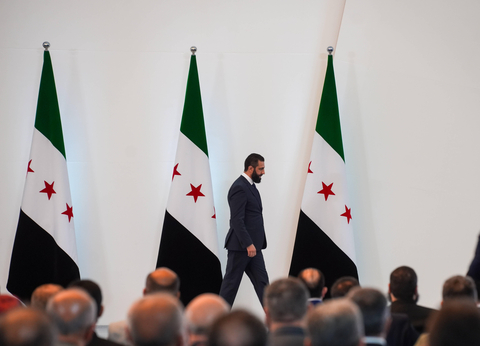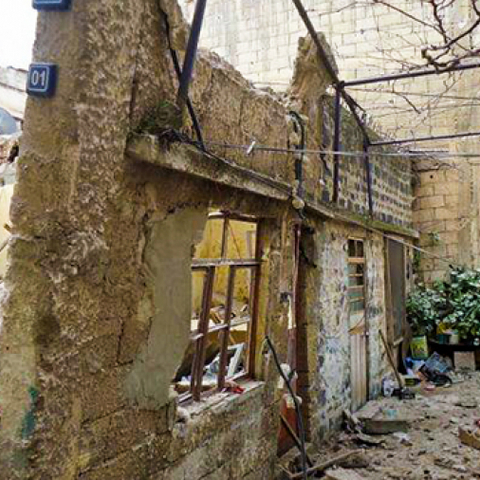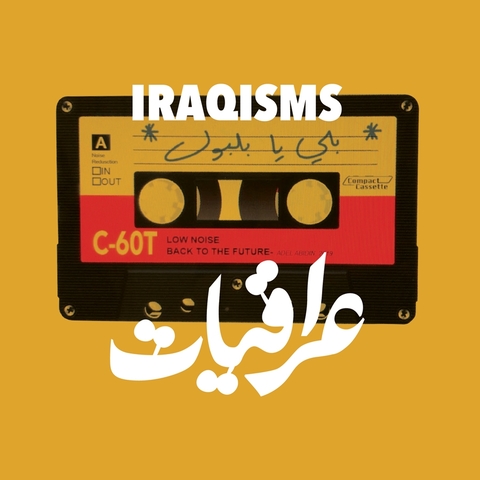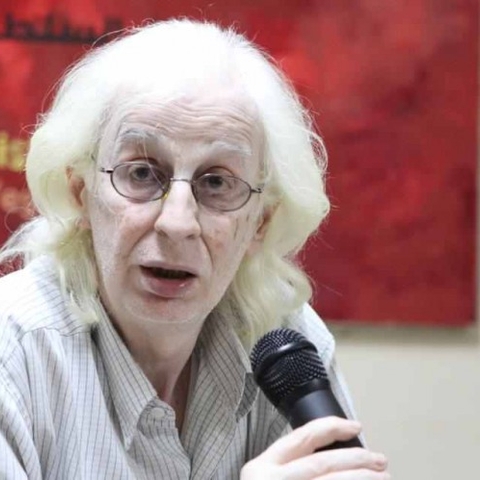The Path of Syrian National Dialogue and Post-Authoritarian Challenges
Disclaimer: This article was written following the Syrian National Dialogue conference. However, its publication was delayed due to the horrific massacres committed in the Syrian coastal region.

IMAGO / NurPhoto
Over the past decades, Syria has exemplified a model of authoritarian rule characterized by centralized decision-making, monopolization of power, and the exclusion of political and societal actors from the public sphere. The dictatorial regime entrenched pervasive security institutions, and developed a rentier economy interconnected with political loyalty networks, which stifled the political and social spheres, transforming the state into a security apparatus where decisions were made far from the people's will. With the outbreak of the Syrian revolution in 2011, fundamental demands emerged that extended beyond changing the ruling regime to restructuring the very concept of the state. The goal was to establish democratic foundations that ensure political participation, power transition, and the rights of individuals and groups.
However, the revolutionary trajectory quickly deviated under the weight of militarization, foreign interventions, and political and social fragmentation, leaving Syrians engaged in a prolonged conflict, not only over governance but also over national identity, power distribution, and the redefinition of the social contract. Fourteen years of revolution and armed conflict have wholly reshaped the Syrian landscape, causing the collapse of the old regime's structure without yet crystallizing clear alternatives capable of filling the void. In this context, with the fall of the Assad regime on December 8, 2024, the country found itself at a pivotal moment requiring the formulation of a new political project capable of reconstructing the state, but this time on foundations that ensure transitional justice, achieve broad political representation and entrench the principle of citizenship as an alternative to ideological and military rule.
Political Tensions and Challenges in the Syrian National Dialogue Conference
Within this framework, the Syrian National Dialogue Conference emerged as an attempt to launch a political process intended to serve as the foundation for the post-authoritarian phase. However, this process was not free from controversy, as opinions on the conference diverged. Some viewed it as a necessary step to solidify the legitimacy of the new state and establish the constitutional and institutional framework for the transitional phase, thus providing structure to the process. Others saw it as a superficial attempt to institutionalize predetermined choices without granting influential political and social forces a genuine opportunity to shape the course of change. Consequently, it risked reproducing centralized governance in different forms. Nevertheless, given the numerous political and security pressures surrounding the transitional phase, the interim government alone cannot be held responsible for the challenges the conference faced. The complexities of the political landscape, internal and external pressures, and the post-war context all influenced the nature and course of the conference, making it difficult to achieve full consensus at this early stage.
To what extent did this conference reflect Syrians' aspirations for building a democratic system? Was it indeed a step toward restructuring the state on new foundations or merely a temporary framework to legitimize the transitional leadership? These questions form the core of the debate over the outcomes of the national dialogue and its ability to establish the foundations of a sustainable political transformation that goes beyond symbolic gestures to substantive change.
The Dialogue: An Attempt at Political Transition
In major political transitions, national dialogue often serves as a central tool for shaping the foundations of a new system and redefining the relationship between the state and society, particularly in countries that have endured prolonged authoritarian rule. From this perspective, the Syrian National Dialogue Conference was convened at a critical juncture amid rapid political transformations and an urgent need to formulate a comprehensive national project that defines the country's future. However, the conference, which was organized within a record period of no more than fifteen days, was not immune to the structural challenges that typically accompany incomplete political transitions.
Preparation for the conference began on February 11 with the formation of a preparatory committee that oversaw dialogue sessions across various Syrian provinces between February 16 and 22. More than 30 listening sessions involving around 4,000 participants resulted in over 2,200 written submissions and 700 formal contributions. Despite these impressive figures, they did not necessarily reflect a comprehensive spectrum of societal and political forces. Key components, such as the Kurdish self-administration, were absent, and women's representation was limited and uneven across different regions. Moreover, individuals with disabilities—who had borne a heavy burden during the years of war—lacked any official representation.
The Need for a Clear Implementation Vision
The conference culminated in a closing session held on February 24 and 25 at the People's Palace in Damascus, with 600 participants representing a broad cross-section of Syrian society, including civil society representatives, religious figures, opposition personalities, and artists. Attendees were divided into six main working groups that addressed crucial issues such as transitional justice, constitution-building, institutional reform, strengthening public freedoms, and economic development. Despite the significance of this agenda, it was insufficient to ensure the conference's success as a transformative political process. The absence of some influential forces and the lack of clear mechanisms for implementing its outcomes rendered it more of a political declaration than a genuine roadmap for the transitional phase.
Additionally, the rapid organization of the conference and the short period allocated for preparatory discussions left little room for deep dialogue that could lead to fundamental agreements. Any national dialogue aimed at rebuilding the state must stem from a long negotiation process incorporating diverse perspectives rather than merely serving as a platform for announcing general principles without clear implementation mechanisms. Instead, the conference functioned as a populist endorsement of future state decisions without concrete commitments to inclusive decision-making.
Thus, the central problem with the National Dialogue Conference was not only its outcomes but also its structure and mechanisms. It did not establish a sustainable dialogue framework but instead produced a limited consensus document that failed to address the core issues that fueled the revolution.
The primary challenge was not the conference's institutional format but its capacity to serve as a genuine foundation for generating lasting political legitimacy. History shows that any transitional process remains fragile unless built on genuine internal consensus that precedes international recognition and establishes legitimacy based on popular participation rather than mere elite endorsement. Successful transitional dialogues do more than outline broad visions for a country’s future—they also ensure the presence of clear mechanisms to translate these recommendations into actionable policies.
In contrast, the final statement of the Syrian National Dialogue Conference lacked any political or legal commitment to implementing its recommendations, raising questions about its seriousness in fostering real change. The conference's recommendations focused on general issues such as preserving Syria’s unity, enhancing freedoms, and drafting a new constitution without specifying binding mechanisms for execution. Moreover, the final statement did not address key issues related to power transition mechanisms, election integrity, and political pluralism—matters at the heart of any democratic transformation.
Examining national dialogue experiences worldwide reveals that their success is not merely in their convening but in their ability to become a sustainable mechanism for state rebuilding. In this sense, Syria’s success in navigating the transitional phase depends not on holding national dialogue conferences but on ensuring that these dialogues serve as genuine and inclusive processes that transcend symbolic gestures to establish a new political framework rooted in effective participation. Rebuilding Syria cannot be achieved through general consensus documents but through restructuring the relationship between the state and society and establishing a political system based on pluralism, equal opportunities, and accountability.
The Need to Move Beyond Symbolism
Given the above, the Syrian National Dialogue Conference, despite its importance as a first step in the transitional political process, was insufficient to achieve the desired democratic transformation. It lacked inclusivity and did not incorporate clear implementation mechanisms, making it more of an effort to legitimize the transitional leadership rather than laying the foundation for a new social contract. Syria’s future depends on the political and societal forces' ability to overcome representation challenges and engage in a more serious dialogue process that ensures the participation of all stakeholders and establishes a transitional phase grounded in democratic principles and citizenship.
The conference was not a genuine attempt to bridge the gap in political representation or establish democratic foundations; instead, it appeared more as an indirect mandate for the new state leadership to manage the transitional phase according to its own vision. Nevertheless, it is essential to acknowledge that the transitional phase cannot be built on hasty decisions or temporary agreements but requires a gradual process that allows for institution-building capable of accommodating Syria’s political and social diversity.



